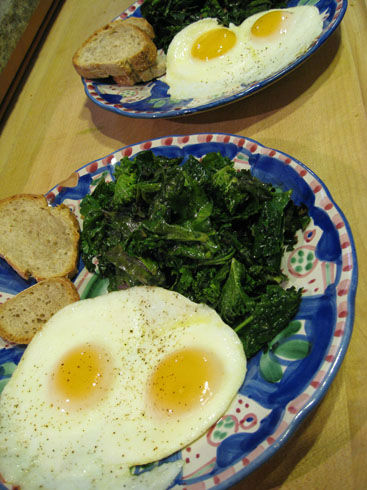When you ask the cashier at the feed store whether the chicks she’s ringing up for you have been sexed, and her answer is, “Ninety percent!”, you know your odds are really 50/50. From there it’s a waiting game to find out whether Betty is a Billy, unless you know the tell-tale traits of chicken sexing. We waited. And now we have a problem.
Regulations in Los Angeles dictate that no one may own keep a rooster unless 100 feet exists between dwellings. Since the lots in our neighborhood are 60 feet wide, that’s a no-go. So the day we first heard the gentle self-discovery of crowing out in the yard, we knew we’d have to take action.

How to Sex a Chicken
There are a few ways to determine the sex of a chicken without squeezing the crap out of them (literally) to expose their sex organs, which is best left to experts by the way. Had we read up ahead of time, we might have been able to ID them at the feed store before buying them. So here, for your benefit, are some tips.
3 Ways to Determine the Sex of a Chicken – WikiHow
The above article shows the difference between how male and female wing feathers align at even a few days old. Females have feathers of varied lengths, whereas male wing feathers are the same length.
Other traits including comb development, saddle feather differences (males have jagged, more pointed feathers and female saddle feathers are rounded), overall size, and temperament.
What to Do when Betty is a Billy?
Even though I’ve been a vegetarian for 25 years, I believe that the responsible thing to do, when a chicken owner discovers they have a rooster on their hands, is to process the chicken and eat it. There are plenty of instructional videos on YouTube for this kind of thing.
But when your meat-eating husband and his motorcycle-riding, perennial-bachelor brother do their research, and go so far as to put boiling water on the stove, and pick out a recipe, then utter, “This is going to change who I am. I can’t do it!” while holding the knife, you come up with alternatives. We honestly don’t have a solution yet, but here are some options:
Find a New Home – some farms need roosters and are willing to take on your extras. If you have friends in rural areas where roosters are allowed, they may be interested in taking Billy as well.
Find a Sanctuary – sanctuaries are generally at capacity with roosters, but we called The Gentle Barn in Santa Clarita and they offered to email a list of resources for rooster placement. Here is the list they sent for local Angelinos:
- – Hooves & Paws Animal Rescue
www.hoovesandpaws.org (661) 944-3740
- – Farm Sanctuary www.farmsan
ctuary.org (661) 269-5404
- – Animal Place www.animalpla
ce.org (530) 477-1757
- – Piece of Peace Animal Sanctuary https://www.facebook.com/pieceofpeaceanimal/
- – Best Friends Animal Society
http://bestfriends.org/ (81 8) 643-3989
Avoid Suspicious Inquiries – if you post an ad for your rooster on social media, you may receive suspicious inquiries from strangers who sound like they’re willing to give your rooster a good home. Be aware that cock fighting is still a thing, and there are people out there looking for new contestants. Here’s a little info about that.
It’s important not to dump your rooster just anywhere (seriously, they show up suddenly at my community garden often – cut that out!). Do the right thing: place the little guy some place where he’ll thrive and be useful.





Pingback: Wordless Wednesday: June is Nearly Here - Gardenerd